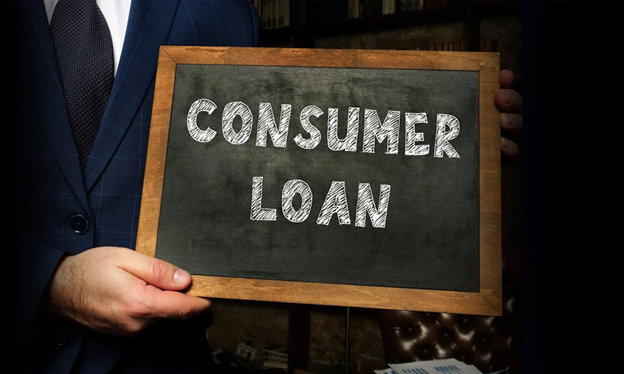Consumer loans are financing options people take to cover urgent financial needs. The needs might include debt consolidation, mortgage, and hospital bills.
Banks and a few private lenders under government regulation can provide loans to the public. This regulation helps check interest rates and prevent fraud through high-interest charges.
There are several types of consumer loans. You can låne-penger/ (borrow money) to consolidate debts, start a business, buy a car or a house, pay for hospital bills, etc.
Five Major Types of Consumer Loans
People borrow money for just about anything. However, these five loan types are popular with several borrowers and lenders.
- Mortgage
- Auto
- Student loan
- Refinance
- Personal loan
It is best to understand their interest rate and category (secured v.s unsecured) before applying for any of them. We will explain these in the sections below.
1. Mortgage
Owning a home requires a lot of financial investments. And sometimes, your savings alone can not do it. But taking a mortgage can help.
Mortgages are financing options taken to cover the cost of purchasing a home. Also, they are secured (we will explain this concept later)
Credit unions, banks, and other regulated lenders provide mortgages at low-interest rates for consumers. And this is due to the security on them.
Factors to Consider Before Taking a Mortgage
Below are a few things you should know before taking out a mortgage.
- Loan Duration/Term:Usually, lenders give between 15 to 30 years to repay them.
- Credit Score: Generally, a high credit score grants you a higher chance of getting any credit. According to nerd wallet, you will need a score of at least 620 to get a mortgage. You can click hereto read more about it.
- Annual Percentage Rate (APR):An APR refers to all costs paid during and after securing a loan. It includes both the interest rates and other charges like the costs of acquiring it. And the APR for a mortgage is between 5% to 6.3%
2. Auto
Getting a car is easier with an auto loan. However, that car becomes security whch you can lose it if you don’t repay in due time.
You can get an auto from banks, online lenders, or car dealers.
Factors to Consider Before Taking Auto Loans
Below are a few things you should know before taking an auto credit.
- Loan Duration:While banks offer more time to repay, dealers or online lenders might not be that generous. For instance, some banks give a period of up to seven years. But a car dealer might offer a maximum of four years.
- Credit Score: Taking this credit requires a score of at least 600. However, you can get a better interest rate with a score of up to 700.
- Annual Percentage Rate:Some lenders offer more generous APRs. You can get between 2.05% to 14.02%
3. Student Loan
This is one of the most popular lending options. You can borrow from family and friends, banks, or other lenders.
Generally, student loans help college students to cover the bills for their higher education. Also, they are in two categories – private funded and federal funding.
The difference between the two kinds is their interest rates. Federal-funded student loans offer more generous rates compared to private-funded ones.
Factors to Consider Before Taking Student Loan
Below are a few things you should know before taking a student loan.
- Loan Period: Those funded by the federal government can offer over 25 years repayment period. However, you might get a maximum of 12 years under private funding.
- Credit Score: According to the University of the People, you do not need a credit score to get federal funding, but private ones require a score of at least 670. However, you can get one without a credit history using a cosigner. But, your cosigner must have a good credit history. You can read this articleto learn more about the credit score requirement for student lending.
- APR for Federal Funding: Federal funding usually offers lower APRs up to 0% (like during the COVID 19 pandemic). However, the rates are 3.7% for undergraduates and 6.8% for graduates.
- APR for Private Funding: Private lenders offer higher financial limits. However, these generous limits come with higher APRs. Students can pay between 3.6% to 13.1%
- Loan Waiver: A waiver is a pardon granted by the lender to cancel the loan terms. Federal funding often offers this waiver.
4. Refinance
Refinancing is a popular option amongst several borrowers. It allows you to exchange your previous debts with a new one that often offers lower rates and longer repayment periods.
There are several loans you can refinance. They include mortgages, student credits, and auto.
5.Personal Loan
You can take this to cover any personal expenses. For instance, they can help you pay for vacations, consolidate debts, etc. Also, they are not secure.
Factors to Consider Before Taking a Personal Loan
Below are a few things you should know before taking a personal loan.
- Loan Duration: The repayment duration is usually one to five years.
- Credit Score: You will need a score of up to 700 to get the best rates. However, some lenders provide offers for those with scores below 550.
- Annual Percentage Rate: You can get from 5% to 30% APR. However, because it is not secure, the higher the amount, the higher the APR.
Categories of Consumer Loans
Another vital factor you should consider before borrowing money is the loan category. It contributes to determining the percentage interest rates and helps you understand the risk of taking such loans.
There are two categories – secured and unsecured. We will explain them briefly in this section.
Secured
Secured loans refer to those that require you to present collateral. Although they are risky since you can lose your property if you cannot repay them, they also offer lower interest rates than others. An example of this is mortgage.
Unsecured
These require no collateral and are less risky. However, rates here are often on the high side. A personal loan is an example of this.
Conclusion
Understanding the types and categories of loans can improve your chances of making the right decisions and securing finances from lenders. In addition, try to improve your credit score by repaying old debt before the repayment due date. This will also help improve your chances of securing more finances in the future.






Comments